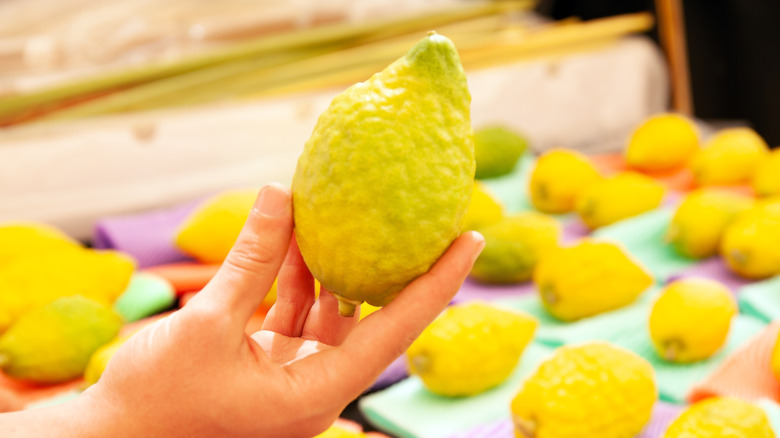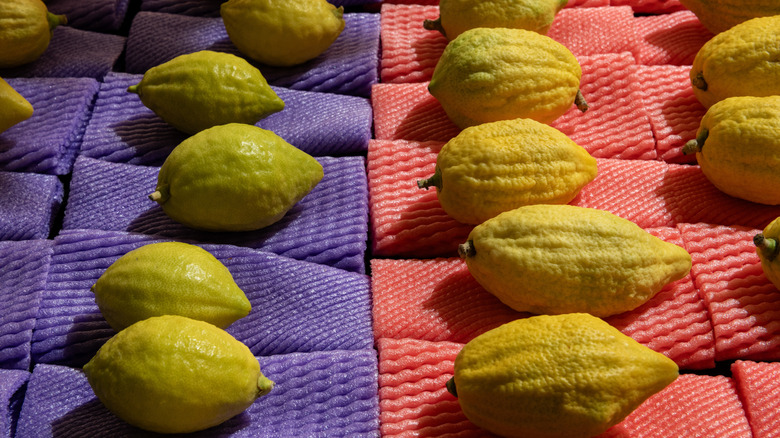How Etrog Fruit Became A Staple Of Sukkot Celebrations
Each year, five days after Yom Kippur, the Jewish festival of Sukkot is celebrated. Paying homage to the protection God provided while the Jews spent 40 years in the desert after exiting Egypt, the seven-day festival has many symbols, one of which is the citrus etrog, aka citron in English.
During the festival, there are ceremonies during which Jews bless and wave the etrog, as well as myrtle, willow, and palm, in six directions. Altogether, these are referred to as the four species and represent the human heart, eyes, lips, and spine respectively. The ritual is done in honor of Leviticus 23:40 in the Torah which states, "And you shall take for yourselves on the first day, the fruit of the hadar tree, date palm fronds, a branch of a braided tree, and willows of the brook, and you shall rejoice before the Lord your God for a seven day period."
The term "hadar" refers to honor, glory, and splendor and tradition dictates that this particular fruit is the etrog. It is seen as being beautiful and heart-shaped, which aligns with the description of the hadar. Waving it, along with the other three, symbolizes devotion to the study of the Torah.
In addition, the etrog holds a second piece of symbolism. It is the only one of the four species that has both fragrance and flavor and is therefore likened to those who are both dedicated to religious study as well as committed to doing good deeds (known as mitzvahs).
How etrogs are chosen and their uses
Etrog is a type of citrus fruit that most resembles a lemon. When ripe, it is bright yellow – though its skin is bumpy instead of smooth like a lemon. Also, while lemons' pith tends to be bitter, the etrog's has a subtle sweetness. However, the amount of juice found inside varies from species to species (though often there isn't a lot, and some have none at all).
In order for the fruit to be suitable for use during Sukkot, it must be completely intact and free of any blemishes, which can create challenges for growers. Leaves of the tree must be secured away from the fruit, so the sharpness of their edges doesn't mar the etrog's skin. Additionally, in Israel, pesticides must be sprayed twice a day in order for the fruit to thrive.
It isn't uncommon for etrog to be discarded after the holiday, but it can be used in recipes, too, and can be part of gently breaking your Yom Kippur fast. It's often made into jams or marmalades, and its peel can be candied by boiling it in water and then simple syrup. It can also be infused into beer, liquor, and liqueur. Additionally, since the etrog has a strong, pleasant scent, the fruit is often used in non-food products like sprays, lotions, candles, and soaps.


